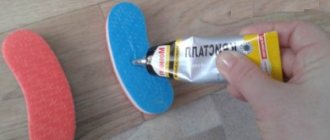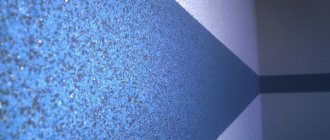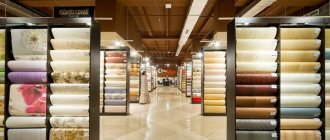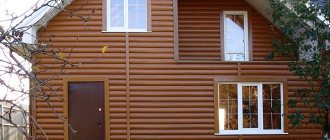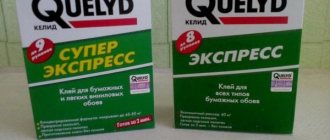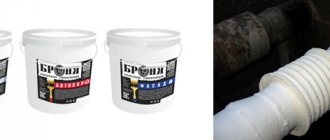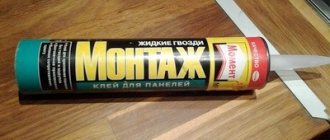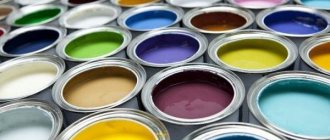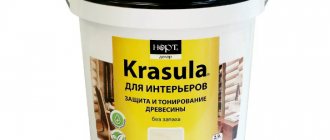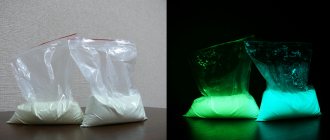To ensure a good level of comfort, both in life and work, it is very important to create a pleasant sound environment. To solve this problem, soundproofing materials are used. They are represented very widely on the construction market. You can choose a solution based on any parameters: location of application, cost, amount of work, etc. Moreover, in a number of materials, sound insulation is combined with thermal insulation or waterproofing, which is very convenient.
Soundproofing materials
You can install soundproofing walls yourself, although it is better to contact teams that specialize in this. Also, given that sound insulation work requires rather messy processes, you should try to install sound insulation at the stage of preparing the room for finishing.
SOUND ABSORBING PLATES
Most soundproofing systems consist of drywall and metal framing. Sound-absorbing plates are placed between the profiles - materials with a fibrous, blown structure, due to which the sound wave is damped.
It is best to use basalt slabs MaxForte-EKOplit and Shumanet BM, fiberglass slabs: Shumanet EKO and Shumanet SK NEO, or hypoallergenic slabs made of polyester fibers - MaxForte-EcoAcoustic.
Material | Packaging volume | Price |
| StopSound BP Standard | 2.88 m2 (4 slabs) | 1275 RUR/pack |
| StopSound BP Prime | 4.8 m2 (8 slabs) | 1715 RUR/pack |
| StopSound ECO | 4.32 m2 (6 slabs) | 2060 RUR/pack |
| Schumanet BM | 2.88 m2 | 1199 RUR/pack |
| Schumanet ECO | 3 m2 | 1126 RUR/pack |
| MaxForte ECOstove | 2.4 m2 (4 slabs) | 864 RUR/pack |
| MaxForte ECOAcoustic | 2.88 m2 (4 slabs) | 1240 RUR/pack |
| Rockwool Acoustic Batts | 6 m2 | 1095 RUR/pack |
| Rockwool Acoustic Ultrathin | 7.2 m2 | 1220 RUR/pack |
Special types of materials
Do not forget that these are not all materials, while some of them are permissible only in certain conditions, while others are universal. For example, these are machine insulators, which can also be used in the construction industry.
But sound insulation of ceilings, walls and floors is not enough. It is extremely important to pay attention to doors and windows. As a solution to problems with windows, you can consider an option such as installing windows from PVC profiles. Its noise insulation characteristics are very high. Typically, an inert gas fills the space between the two windows. The most common and most commonly used gas is argon.
As for doors, they usually use a multilayer structure, which consists of chipboard, fiberboard and laminate. The space between the door and the door frame is sealed with special gaskets for sealing. The types of modern soundproofing materials are replete with variety, but you need to remember that only comprehensive measures can achieve a high level of insulation from external noise.
Recommendations for the selection of soundproofing materials
Agree, solving any problem requires special knowledge and experience. Often, when searching for a solution, we listen to the opinion of a neighbor, a friend, or look for advice on the Internet.
By collecting the positive and negative experiences of our fellow sufferers, we become even more confused. In this state, you can easily get caught up in the idea of using not only ineffective, but sometimes environmentally harmful materials.
Our company’s specialists will help you quickly understand the rules of sound insulation, understand what sound insulation works and teach you to navigate the nuances of this specific industry.
Our specialists have extensive experience in calculating noise protection structures. We are trusted by engineers and architects of large design institutes, creative workshops, and house-building companies.
Guaranteed noise reduction is provided only by specialized materials!
Recommendation 1 . Choose materials with the lowest possible resonance frequency fres. The lower the natural frequency, the wider the operating range covered, the more effective the sound insulation.
Recommendation 2 . Do not trust advertising, pay attention not only to the values of the sound insulation indices Rw and Ln, but also be interested in the insulation values in the low-frequency (bass) range (LF, up to 300 Hz). It is the low frequency range that determines the quality of noise protection.
Recommendation 3 . Remember that the density of soundproofing materials must be comparable to the density of building structures.
Recommendation 4 . Be careful when sealing cracks, gaps, and gaps. A cavity in the soundproofing lining with a width of only 1 mm will reduce all your efforts to nothing.
Recommendation 5 . Understand: miracles do not happen. If the problem of noise protection were solved with the help of ultra-thin materials, then it would not exist, just as soundproofing wallpaper does not exist.
Below is a brief analysis of materials that are often credited with soundproofing properties. Let's figure out what is what in terms of a professional approach to noise protection!
the right choice depends on you, and we will tell you what to pay attention to
The properties of materials will be assessed on a conventional scale with the values -unacceptable, -bad, -acceptable, -good, -ideal. The assessment will examine such main parameters as the breadth of the operating range, the ability of the material structure to attenuate sound energy, the responsiveness of the material to acoustic vibrations, and sound insulation efficiency in the low-frequency (LF) range.
Well, now it's time to finish the article. All the material I wanted to share has been reviewed. I hope it will be useful to you, and you will use it when you need to choose soundproofing materials. Improve your own practical skills and gain new knowledge, as they say: “It’s never too late to learn!” That's all, thank you for your attention, successful and easy repair!
TERMOZUKOIZOL
In addition to acoustic mini-plates, roll materials are also used for sound insulation. The most famous are ThermoZvukoIzola mats. The material is considered one of the most inexpensive and effective options with a wide range of applications. Suitable for soundproofing ceilings, walls and partitions, as well as insulating pipes and air ducts.
Material | Packaging volume | Price |
| TZI 10/14 mm | 15 m2 | 4200/5200 RUR/pack |
| ThermoSoundIsol Light/Standard | 15 m2 | 5200/6600 RUR/pack |
| ThermoSoundIsol Forte | 7.5 m2 | 4600 RUR/pack |
| ThermoSoundIzol Fireproof | 7.5 m2 | 8100 RUR/pack |
| SoundGuard ISOcarpet | 7.5 m2 | 2775 RUR/pack |
Classification
When organizing soundproofing of walls in an apartment, modern materials for various purposes are used. There are three main groups of insulators:
- sound-absorbing;
- soundproofing;
- ultra-thin.
Materials for soundproofing walls vary in composition and installation method. They are selected to suit the specific needs of residents.
Sound-absorbing
The action of sound-absorbing materials is based on the conversion of sound energy into heat energy. This allows you to dampen the severity of reflected waves. Such absorbers include polyurethane foam panels, fiberglass, ZvukoIzol and liquid sound insulation.
During repairs, the noise-absorbing layer is mounted on the walls and covered with plasterboard on top. However, there is one type of sound absorbers that does not require additional finishing. This is a roll stopper. It solves the problem of noise and acts as an effective decor.
Sound-absorbing rolls come in varying degrees of rigidity:
- hard;
- semi-rigid;
- soft.
The first category includes slabs based on mineral wool fibers. Porous fillers have been added to the structure. The main disadvantage of such plates is their heavy weight. This is the reason why, unlike most soundproofing materials, they are not suitable for ceilings.
Semi-rigid ones have a porous structure, therefore a high degree of noise absorption. Fiberglass boards are lighter than hard boards, but heavier than soft boards. Soft insulation is much lighter, as it is based on felt or fiberglass. The noise absorption coefficient of such material is quite high.
Soundproofing
The category of soundproofing includes materials with a complex structure that prevents the penetration of sound. The best options are:
- Soundproofing;
- Schumanet;
- ZIPS panels.
Often soundproofing materials have a decorative design, which is widely used for home decoration. Due to their multilayer structure, they effectively block noise waves.
Ultra-thin
Films and membranes that neutralize noise are considered to be minimal in thickness. Mineral membranes (like Texaund) and liquid GreenGlue insulation are popular. The advantages of the materials are the preservation of free space due to the minimum layer and ease of installation. Thin, hand-made soundproofing of walls in an apartment will save the precious free space of any room.
One of the options for compact sound insulation is soundproof wallpaper for the walls in the apartment.
DAMPING TAPES
Damper tapes are used for vibration insulation of profiles in all sound insulation schemes for ceilings, walls, floors and partitions. The tape glued to the profile allows you to avoid the transmission of vibrations and eliminate rattling of the frame. Damper tapes for sound insulation are produced in windings of 30 m, in different thicknesses of 50, 100 and 150 mm. In our online store you can buy MaxForte damping tape and Vibrostek tape from the Acoustic Group company.
Material | Winding | Price |
| Stop sound V100 | 30 m | 1250 rub. |
| tape Maxforte 50/100/150 mm | 30 m | 450/850/1250 rub. |
| Vibrostack tape 100/150 mm | 30 m | 1250/1880 rub. |
After the metal frame is assembled and sound-absorbing boards are laid in it, the profile is sheathed with sheets of plasterboard (gypsum plasterboard). GKL sheets are attached in two layers, forming a massive barrier that reflects sounds back towards a noisy room.
Cork
Another material is cork, created from unique cork chips. This insulator is produced in different forms, and can be presented either in the form of a panel or slab, or as a rolled material. With a layer thickness of 0.3 centimeters, the noise reduction index reaches 18 dB, and with increasing thickness, it increases accordingly.
It should also be noted that the material is easy to install and operate, does not absorb moisture, has good aesthetic qualities, is durable, environmentally friendly and effective. And besides, it combines the properties of sound and heat insulation. But this type is expensive, and in addition, requires careful installation, since the crumbs can crumble and the material can be torn.
ACOUSTIC GYPSOCARDBOARD
For maximum results when installing sound insulation, ordinary plasterboard sheets are replaced with heavier gypsum fiber sheets (GVL) or special gypsum plasterboard sheets (GKL) AKU-Line (AKU-LINE) with an increased density of 950 kg/m3. Aku-Line is available in two formats: 2500 x 1200 x 12.5 mm (S = 3 m2) and 2000 x 1200 x 12.5 mm (S = 2.5 m2). Compared to a regular sheet of drywall, the Aku-Line sheet will provide an increase of up to 2 dB!
Also, to increase sound insulation, you can use the Soundline-dB acoustic triplex, consisting of two thin weighted gypsum fiber board sheets (density ~1200 kg/m3) connected through a damping membrane. Due to the elastic connection between GVL sheets, the Soundline-dB acoustic triplex shows higher sound insulation compared to a GVL sheet of equal surface density.
Materials for frameless sound insulation of walls
It is much more difficult for a material of small thickness to absorb noise than 5 cm thick acoustic mineral wool in traditional frame sound insulation schemes. Therefore, when installing frameless sound insulation, multilayer composites are used, with layers of different densities and structures (acoustic impedances must differ). This is done to maximize sound absorption inside the material.
The complexity of production leads to high material costs, and accordingly, the price of frameless sound insulation for the client increases. You need to understand that the cost of frameless sound insulation is at least the same (or even more) as that of more effective (but also thicker) options using a frame:
It is necessary to choose a balance between loss of area and the cost of sound insulation
SOUND INSULATION PANELS
In addition to acoustic gypsum board, cardboard panels filled with sand are widely used. The most popular panels are PhoneStar (Fonstar) from Wolf Bavaria, ECOpanel from MAXFORTE, Sonoplat and their analogues from other companies: panels SoundGuard, Ticho, EcoCloud and others. Due to the granular structure, panels with sand show high losses of sound wave energy; the large weight of soundproofing panels (16-20 kg) also distinguishes them favorably from conventional drywall.
Material | Panel dimensions | Price |
| Sonoplat Standard Plus | 0.96 m2 | 1030 RUR/m2 |
| SoundGuard EcoZvukoIzol | 0.96 m2 | 1020 RUR/m2 |
| MaxForte EcoPanel | 0.96 m2 | 980 RUR/m2 |
| Phonestar Triplex | 0.96 m2 | 890 RUR/m2 |
Panels with sand should be mounted at a distance from the surface - this way they will give a greater effect. Soundproofing panels provide maximum effect in frame soundproofing schemes as a replacement for plasterboard.
Review of sound-absorbing and sound-insulating materials
Membrane sound insulators are applicable to any surface, have elasticity, small thickness and increased efficiency in noise absorption. The most popular brands in Russia are
- Global Acoustic
- Tecsound
- Soundproof
Global Acoustic produces:
– Soundproofing panels – Soundproofing membranes – Soundproofing boards
Advantages of the material:
– odorless – dust-free – easy to install – environmentally friendly – unique for the Russian market
VIBROACOUSTIC SEALANTS
Special non-hardening sealants are used when installing sound insulation to eliminate noise transmission channels. Sound waves, like water, penetrate even the smallest cracks, so to achieve maximum effect it is necessary to achieve complete sealing of the constructed circuits. Areas of application of vibroacoustic sealants: sealing seams between sheets of plasterboard and gypsum fiber board, seams around the perimeter of sound insulation on a ceiling or wall, seams between screed and walls, etc. The most commonly used sealants are Vibrosil and vibroacoustic sealant MaxForte.
Material | Tube volume | Price |
| Sonetik (silicone) | 310 ml | 435 RUR/tube |
| sealant MaxForte | 280 ml | RUR 380/tube |
| Vibrosil sealant | 290 ml | RUR 324/tube |
What material is best for soundproofing an apartment?
Minvata
The most common and one of the most effective materials is mineral wool, produced in mats and rolls. It is believed that mineral wool does not allow about 99% of noise to pass through. This is a universal material and is suitable for soundproofing any surfaces in the apartment.
The only thing that holds many people back from using mineral wool is the need to install a frame into which it is installed.
The advantages of mineral wool as sound insulation
- Light weight;
- Affordable price;
- Non-flammability;
- Simple installation (laying);
- Efficiency;
- Additional thermal insulation;
The main disadvantages are the need for a frame and loss of properties after exposure to moisture. Therefore, mineral wool is usually not used in rooms with high humidity (bathrooms, showers, etc.) Although in this case there is a way out - installing a vapor barrier material. How effective it will be depends on the humidity level.
Cork
Another great sound-reflecting material is cork. Usually available in slabs and can be laid on almost any surface. Cork is considered the most effective for protecting against impact noise. It’s not suitable for soundproofing the ceiling, but it’s just right for the floor.
Soundproofing systems ZIPS
This is a modern material for sound insulation. Available in the form of slabs, fastened using a hammer drill and dowel-nails with umbrellas. Installation is very simple and you can easily handle it yourself.
Many manufacturers and experts claim that ZIPS is the best material for sound insulation. The only drawback for many apartment owners is the high cost.
Thermosound insulation
Another modern material that has recently appeared on the market. Has good soundproofing properties. It is made from synthetic components. It is recommended to lay it in several layers, since this material is produced with a thickness of only 5-8 mm, which, as practice shows, is not enough for an apartment.
Special soundproofing panels
Such panels are attached directly to the wall, after which all joints are filled with acoustic sealant. The thickness varies from 4 to 12 cm. The outer surface is suitable for finishing (putty, painting, wallpaper, drywall, etc.)
Soundproofing membranes
Suitable for comprehensive protection of a room from extraneous noise or as an independent material, but with less effect.
Advantages:
- Dense and thin, while providing quite a decent level of noise protection;
- Argonite, which is safe for human health, is mainly used for production.
- Flexible, easy to install at any angle.
Don’t know what material to use to soundproof the walls in your apartment? This is not surprising - in construction stores the choice is simply huge and it can be very difficult to choose a decent option from the whole variety of products. Next, we list the most popular and most effective brands of soundproofing materials.
VIBRATION SUSPENSIONS
When soundproofing the ceiling from neighbors above, special vibration-isolating mounts are used, on which ceiling profiles are hung. Vibration suspensions act as a damper, eliminating rigid connections (sound bridges) through which impact noise passes (clattering, falling objects, grinding furniture).
Vibration suspensions are divided into two types:
➢ Basic . For example, Vibrofix Protector is based on EPDM rubber elastomer. Or Vibroflex-Ultracustic. Such suspensions are inexpensive, and at the same time perform 100% of their functions! They isolate from all household noise that may occur among neighbors.
Material | Price |
| Vibrofix Protector | 110 RUR/piece |
| Ultracostic | 99 RUR/piece |
| Vibration suspension KNAUF (KNAUF) | 110 RUR/piece |
| Sonocrep Protector | 110 RUR/piece |
| Sonocrepe Protector PRO | 185 RUR/piece |
➢ Reinforced . They are based on Sylomer material (Getzner Werkstoffe, Austria), specially developed to solve problems in the field of vibration protection. Such suspensions include Vibrofix, vibration suspension MaxForte VibroStop PRO and Vibroflex.
Material | Price |
| Sonocrep EP20 | 365 RUR/piece |
| Maxforte VibroStop | from 375 RUR/piece |
| Vibrofix | from 310 RUR/piece |
| Vibroflex | from 367 RUR/piece |
Mineral wool
As one of the best representatives of sound suppressing materials, you can consider stone wool. Its sound absorption coefficient reaches up to 99%. It is also used to isolate from extraneous noise almost all types of premises. In addition, stone wool is widely used for reinforced concrete or beam floors.
All of the above building materials cope well with airborne noise. If there is a question about solving the problem of absorbing impact noise, then a “floating floor” system or design is used. Insulating material is used as the base of this structure.
A coating has already been placed on it. Stone wool is often used when creating a floating floor system.
Advantages:
- Withstands temperature changes, and in addition does not collapse when exposed to temperatures up to 550 degrees.
- It does not contain resins.
- There is no need to perform lathing during installation.
- The material is durable and environmentally friendly.
- It is resistant to shrinkage.
Flaws:
- It strongly absorbs moisture, so it definitely requires additional waterproofing.
Details about the properties and calculation calculator.
FRAMELESS SOUND INSULATION
In addition to traditional sound insulation schemes on a frame, there are thin sound insulation options that are assembled without installing a profile, which means they take up less space. Fine soundproofing schemes use composite materials consisting of several layers of different structures.
The most common and well-known thin materials include: Tecsound FT and Maxforte SoundPRO. Such materials are not cheap, but they allow for sound insulation with minimal loss of space, while maximizing the area and height of the room.
All thin composite materials that contain a soft sound-absorbing layer can be mounted in frameless sound insulation systems, that is, they are attached directly to the wall and then covered with plasterboard. This way creates effective sound insulation that can reduce noise by 2.5-3 times!
Material | Package/roll volume | Price |
| Tecsound FT | 6.6 m2 | from 1989 rub./m2 |
| MaxForte SoundPRO | 7 m2 | 1220 RUR/m2 |
Kinds
The variety of materials for soundproofing walls in an apartment can confuse everyone. The best ones:
- Isoplaat boards;
- Kraft panels;
- EcoZvukoIzol;
- liquid Isotex material.
Therefore, it is important to know the basic characteristics of each of the popular building materials.
Isoplaat
Isoplaat tiles are an eco-friendly option. The basis of its structure is the fibers of coniferous trees. The texture of the slabs allows you to create a smooth wall surface. The advantages of the material are:
- strength;
- increased slab rigidity;
- long service life;
- ease of installation.
Along with them, there are several disadvantages: price (exceeding the cost of installing other insulation) and vulnerability to moisture.
Kraft
Multilayer panels from this manufacturer are made from wood, waxed and corrugated paper. Their thickness dampens noise up to 23 decibels.
For walls in an apartment, such panels are always relevant as an insulating or finishing layer. Minimum thickness, environmental friendliness and weight are the advantages of the material. It is also valued for its low price, ease of use and the absence of the need to create a frame.
An unpleasant aspect of multilayer slabs for interior decoration of a house is the impossibility of installation in bathrooms and toilets, as well as other rooms with high levels of moisture, and vulnerability to rodents.
Eco soundproofing
The EcoZvukoIzol panel is a modern soundproofing material consisting of 7 layers of cardboard profiles and quartz sand.
These plates allow you to achieve a higher degree of sound insulation - up to 38 decibels. They are used in residential buildings and in the design of recording studios.
Isotex
The material is made from natural raw materials. There are two types of slabs available in thickness: 12mm and 25mm thick. Installation of panels is carried out using connections called tongue-and-groove. Isotex boards are elastic, therefore they are used to protect against airborne noise or impact.
The liquid type of sound insulation is considered the best option for filling free cavities. On the surface it is sprayed with polyurethane foam using construction equipment. As a result, a monolithic coating is created that blocks the flow of sounds. The disadvantages of soundproofing material include the need to use specialized tools. Products of various manufactures are on sale:
- Synthesia (Spain);
- Ecotermix (China);
- Demilec (USA);
- Bayer(Germany).
Liquid soundproofing material is a universal option for any living space, allowing not only to eliminate interference, but also to protect it from the cold.
SANDWICH PANELS ZIPS
Another type of thin sound insulation without a frame is the ZIPS sandwich panel. The panels consist of hard GVL sheets and a soft sound-absorbing layer. A distinctive feature of ZIPS panels is a unique fastening system through built-in vibration units that prevent the transfer of vibrations from the insulated surface to the panel. The advantages of ZIPS panels include ease of installation. The disadvantages are the high price of ZIPS panels and the need to pre-level the surface to which they will be attached.
Material | Panel dimensions | Price |
| ZIPS Z4 | 0.72 m2 | 2520 RUR/piece |
| ZIPS III Ultra | 0.72 m2 | 2069 RUR/piece |
| ZIPS Vector | 0.72 m2 | 1418 RUR/piece |
| ZIPS Module | 0.72 m2 | 1418 RUR/piece |
| ZIPS Cinema | 0.72 m2 | RUB 1,785/piece |
| ZIPS Gender Vector | 0.72 m2 | 2050 RUR/piece |
Soundproofing membranes
Roll coating made of mineral substances in combination with a polymer binder. It is presented in the form of a special film, which allows it to be used on any surface. Installation is carried out using an adhesive mixture. Pros:
- The operating temperature of the film ranges from -60 to +180 degrees, which allows it to be used both indoors and outdoors.
- The coating is resistant to mechanical stress and tearing.
- Eco-friendly and elastic.
- Does not break when bent in case of freezing.
- Long service life.
Among the disadvantages is the high price.
ROLL SOUND INSULATION FOR FLOOR
The principle of operation of rolled floor sound insulation is the elimination of rigid connections between the screed and the building. To do this, rolls of sound insulation are folded onto the walls to the height of the future screed, creating a kind of trough. Screeds made using this technology are called “floating” because they do not come into direct contact with either the floor or the walls.
To soundproof the floor, bitumen-polymer substrates are used, which are rolled out onto the subfloor before pouring the screed. The materials provide sound insulation from impact noise and waterproofing, so they can also be used for high-quality waterproofing of a bathroom or bathroom.
Material | Roll volume | Price |
| StopZvuk-M | 10 m2 | 3810 rub. |
| Soundproofing | 15 m2 | 3520 rub. |
| MaxForte ShumoIzol | 10 m2 | 3200 rub. |
| Schumanet 100 | 10 m2 | from 2900 rub. |
Peculiarities
All types of noise are individual, and therefore require certain actions to eliminate them. Before deciding which modern materials to buy for soundproofing walls in an apartment, you should determine the type of noise and its source of origin.
Airborne emissions are neutralized simply by covering the walls with plasterboard. If installing a frame is not enough, you can fill the voids with mineral wool to enhance the effect.
Impact noise is eliminated by using soundproofing agents. Surfaces can be finished with rolled cork wall coverings, which can retain even loud sounds within their structure. To isolate the penetration of sound through the floor, you can use cork coverings installed as a substrate under the laminate.
Structural sound interference is eliminated by sealing interior partitions in houses, as well as insulating adjacent structural elements. For this purpose, construction sealants and fine-pored rubber are used. It is quite elastic and easily attaches to surfaces of any texture.
SOUND INSULATION BOARDS FOR FLOORS
For maximum sound insulation of the floor from neighbors below, special high-density basalt slabs are laid under the screed. The materials effectively eliminate both impact and airborne noise. The total thickness of the scheme (sound insulation + screed) will be 8-10 cm.
Material | Packaging volume | Price |
| MaxForte ECOslab Floor | 3 m2 (5 slabs) | 1260 RUR/pack |
| StopSound BP Flor | 5.76 m2 (8 slabs) | 2235 RUR/pack |
| Noise stop S2 | 7.5 m2 (10 slabs) | 2746 RUR/pack |
| Noise stop K2 | 3.6 m2 | 1280 RUR/pack |
The recommended layer of slabs is 3-4 cm, slabs with a thickness of 20 mm are laid in two layers (applies to Shumostop K2 and Shumostop S2), slabs with a thickness of 30 mm can be laid in one layer (MaxForte-EKOplit 110 kg/m3).
Soundproofing walls in an apartment: reviews from owners
To find out how to soundproof the walls in an apartment, you need to read the reviews. But it is worth noting that reviews from apartment owners who have soundproofed their walls are quite contradictory. Some people can’t get enough of it, while others only have profanity about it. Most likely, those who were dissatisfied were those who chose the wrong soundproofing material or did not follow the installation technology.
There are also a lot of custom reviews. It is especially different in this regard. Almost every third review praises its products. But be that as it may, there are also real reviews. Below are a few of them.
Polystyrene foam can retain heat, but is not suitable for sound insulation
We didn't soundproof, but our neighbor was sometimes bothered by the creaking of our bed. So he decided to cover the wall bordering our room. I don’t know where he read what, but he soundproofed the walls under the plaster using polystyrene foam. I don’t know if he can now hear the creaking of our bed, but just as we heard his cell phone ringing and his snoring, we can hear it all. Foam plastic does not seem to soundproof very well.
Ekaterina, Rostov-on-Don
In our apartment, we lined the walls in the middle passage room with decorative cork panels. Thickness approximately 5 mm. After this, the crying of the child in this room practically ceased to be heard in other rooms. I was satisfied, but it will probably be weak for soundproofing the ceiling and soundproofing the floor. In addition, the room became a little dark (the panels were a natural cork color), but I saw white ones on sale. Very environmentally friendly.
Victoria, Ufa
My husband and I made a regular frame system in our apartment. Eco-friendly slabs made of AkuFine Eco polyester fiber were laid inside. They were covered with Soundline and drywall. Vinyl wallpaper was glued over the drywall. The room became quiet, beautiful and cozy.
Evgenia, Omsk
Frame sound insulation system is the most effective
I have experience with sound insulation. Fonstar panels were installed in the bedroom. We fell for the fact that it was small in thickness. The effect is practically zero. But when they made the nursery, they consulted with a lot of people. As a result, they made a frame system on vibration mounts with Shumanet BM. I will say, from the point of view of the result obtained, this is heaven and earth! Yes, they ate 8 centimeters, but there is really complete sound insulation. Now there is peace and quiet! So it’s better to think about it right away, then you won’t need to redo it.
Victor, Moscow
I decided for myself to make a cheaper, but more soundproofing renovation. I erected a regular frame on the walls, and placed AkuFine Eco-50 acoustic slabs in two layers between the profiles. I also installed two layers of drywall on top. The result is excellent sound absorption and noise is well retained. I recommend making a thicker sound-absorbing layer. The effect is excellent - the neighbors don’t hear me, and I don’t hear them.
Alexander, Kazan
In order not to waste time and money on soundproofing the walls in the apartment, materials should be selected only after consultation with specialists. It is also very important that noise insulation work is carried out by professionals in their field, and not by the so-called “jack of all trades”. You should not be fooled by the advertising of thin panels; you need to understand that the more layers, the thicker they are and the greater the specific gravity of the material, the better the effect will be. Many people are still interested in how much it costs to soundproof a wall in an apartment? There is no definite answer to this question, since many factors influence the final price. But in any case, to achieve a good result you will have to spend a lot of money.
SOUND INSULATING MEMBRANES
To reduce water noise in pipes and noisy air ducts, high-density damping membranes are used. The most popular soundproofing membranes are TECSOUND (Texound), StopZvuk VEM, SoundGuard Membrane and others. The standard thickness of soundproofing membranes is 2 and 3.7 mm.
Membranes are used for:
- for sound insulation of sewer risers and hot water supply/hot water supply pipes;
- damping of metal sheets and air ducts;
- increasing the sound insulation of walls and ceilings, glued between sheets of plasterboard.
Increased noise in pipes occurs due to vibrations of thin, light walls, which are damped when covered with viscoelastic membranes. Thus, the principle of operation of all soundproofing membranes is to increase the weight of the “rattling” surface.
Soundproofing membranes are used not only for soundproofing pipes, but also to correct acoustics in rooms with powerful sound (home theater, rooms with stereo systems, recording studios). The membrane is clamped between two sheets of drywall; such a viscoelastic layer dampens the sheets of drywall, preventing them from “humming.”
Material | Roll sizes | Price |
| Tecsound 70 | 6.1 m2 | 1591 RUR/m2 |
| Membrane MAXFORTE | 3 m2 | 1200 RUR/m2 |
| K-Fonik ST GK 072 | 2 m2 | 3200 RUR/m2 |
Rating of the best modern materials
Soundproofing materials for walls are a fairly common product. And industry produces them in large quantities. Therefore, the problem of choice appears before the apartment owner who is thinking about additional protection. All types of wall sound insulation and measures to protect against temperature loss have characteristic features.
